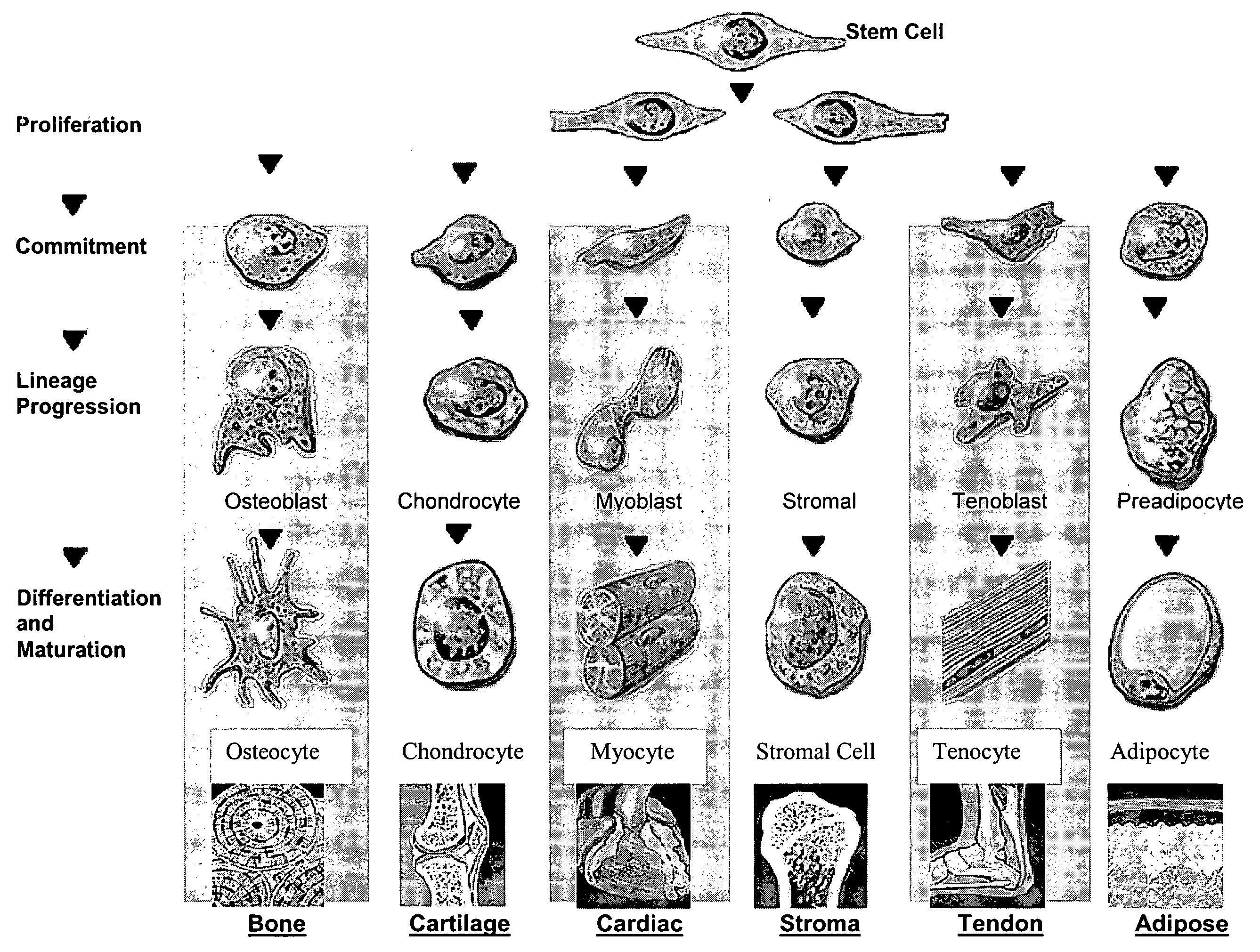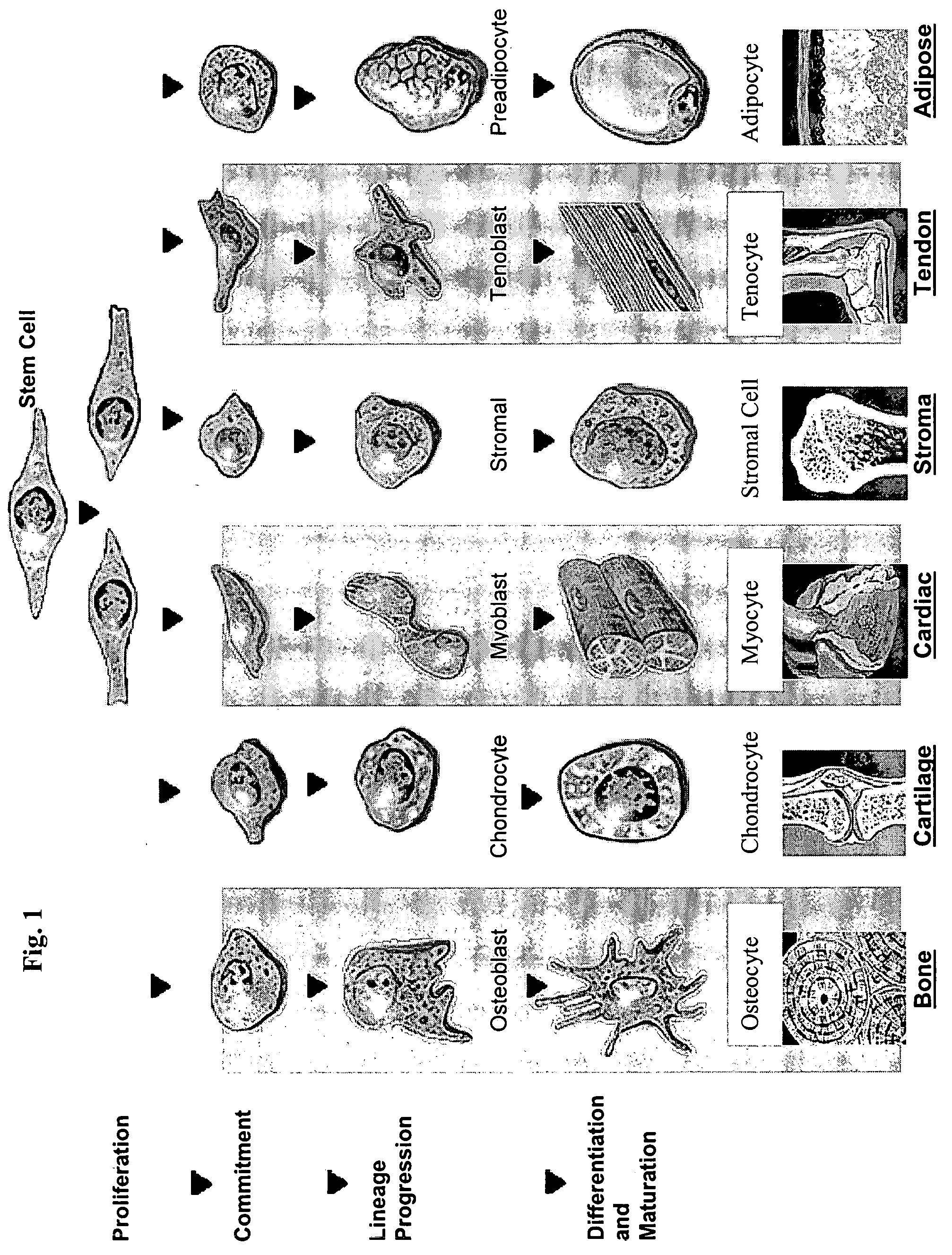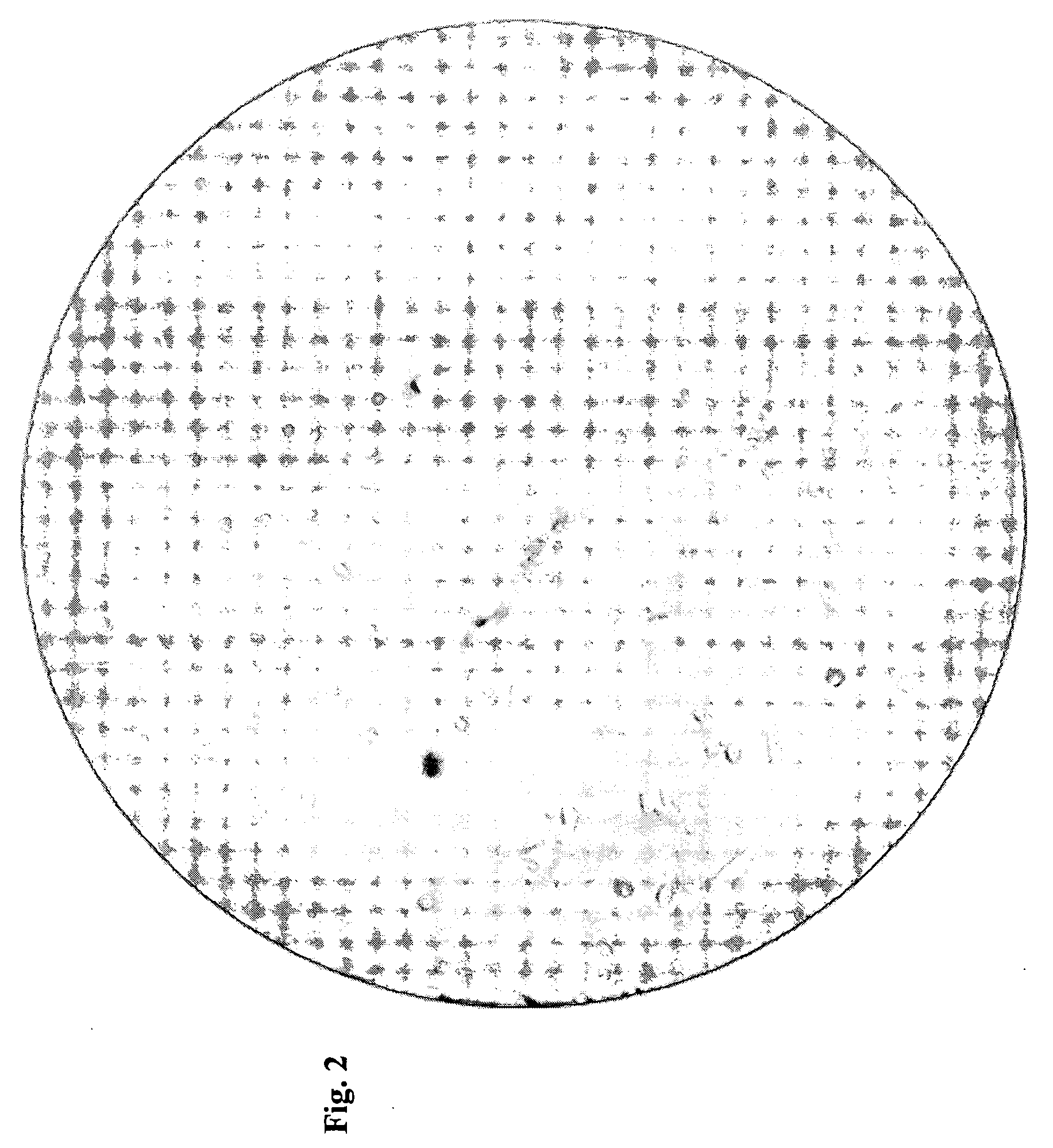Stem cells for clinical and commercial uses
a stem cell and clinical technology, applied in the field of cell physiology, can solve the problems of affecting the use of stem cells in widespread or cost-effective clinical treatment, unable to meet the needs of the same patient, and unable to obtain a large number of adult or fetal stem cells from any one tissue, etc., to achieve true pluripotency, high cell yield, and low cost
- Summary
- Abstract
- Description
- Claims
- Application Information
AI Technical Summary
Benefits of technology
Problems solved by technology
Method used
Image
Examples
Embodiment Construction
[0030] Although making and using various embodiments of the present invention are discussed in detail below, it should be appreciated that the present invention provides many inventive concepts that may be embodied in a wide variety of contexts. The specific aspects and embodiments discussed herein are merely illustrative of ways to make and use the invention, and do not limit the scope of the invention.
[0031] In general, a stem cell is a pluripotent cell in an unspecialized (e.g., undifferentiated) state that may give rise to one or more unspecialized cells. One critical identifying feature of a stem cell is its ability to exhibit self-renewal or to generate more of itself; therefore, a cell with the capacity for self-maintenance. In addition, as used herein, a stem cell is an unspecialized cell capable of proliferation (replication many times over), self-maintenance, and production of a large number of specialized functional progeny, as well as an ability to regenerate tissue aft...
PUM
| Property | Measurement | Unit |
|---|---|---|
| concentrations | aaaaa | aaaaa |
| diameter | aaaaa | aaaaa |
| time | aaaaa | aaaaa |
Abstract
Description
Claims
Application Information
 Login to View More
Login to View More - R&D
- Intellectual Property
- Life Sciences
- Materials
- Tech Scout
- Unparalleled Data Quality
- Higher Quality Content
- 60% Fewer Hallucinations
Browse by: Latest US Patents, China's latest patents, Technical Efficacy Thesaurus, Application Domain, Technology Topic, Popular Technical Reports.
© 2025 PatSnap. All rights reserved.Legal|Privacy policy|Modern Slavery Act Transparency Statement|Sitemap|About US| Contact US: help@patsnap.com



